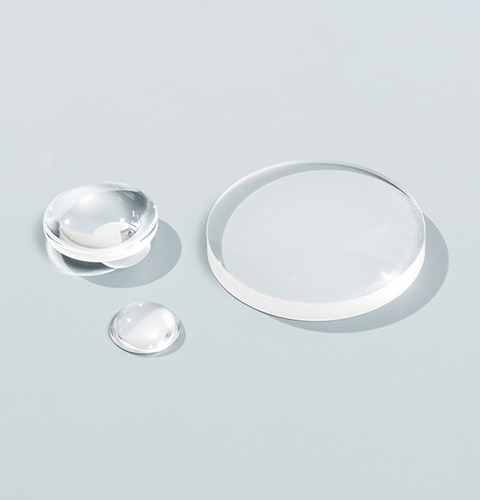Calcium Fluoride (CaF2)Plano-Convex Lenses
Plano-convex lenses deliver less spherical distortion when focusing at infinity (when the imaged object is far away and the conjugate ratio is high). Therefore they are the go-to lens in cameras and telescopes. Maximum efficiency is achieved when the plano surface faces the desired focal plane, in other words, the curved surface faces the collimated incident beam. Plano convex lenses are a good choice for light collimation or for focusing applications utilizing monochromatic illumination, in industries such as industrial, pharmaceutical, robotics, or defense. They are an economical choice for demanding applications because they are easy to fabricate. As a rule of thumb, plano-convex lenses perform well when the object and image are at absolute conjugate ratios > 5:1 or < 1:5, so spherical aberration, coma and distortion are reduced. When the desired absolute magnification is between these two values, Bi-convex lenses are usually more suitable.
Due to its high transmission from 0.18 µm to 8.0 μm, CaF2 exhibits a low refractive index varying from 1.35 to 1.51 and is commonly used for applications requiring high transmission in the infrared and ultraviolet spectral ranges. Calcium fluoride is also fairly chemically inert and offers superior hardness compared to its barium fluoride, and magnesium fluoride cousins. Paralight Optics offers Calcium Fluoride (CaF2) plano-convex lenses with antireflection coatings for either the 1.65 µm to 3.0 µm or 2 µm to 5 µm wavelength range. This coating greatly reduces the average reflectance of the substrate less than 1.25%, yielding a high average transmission greater than 95% across the entire AR coating range. Check the following Graphs for your references.
Plano-Convex Lenses
Professional technical engineer dedicated to guide you
According to your actual needs, choose the most reasonable overall design and planning procedures
